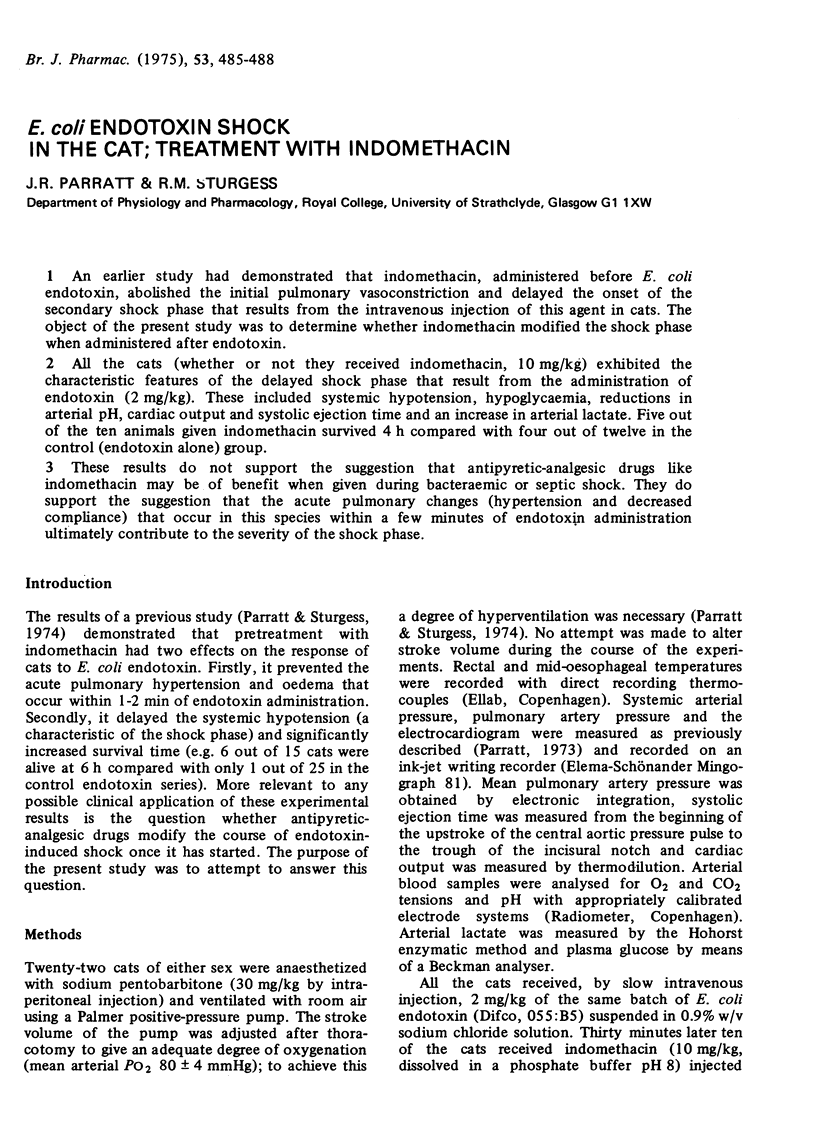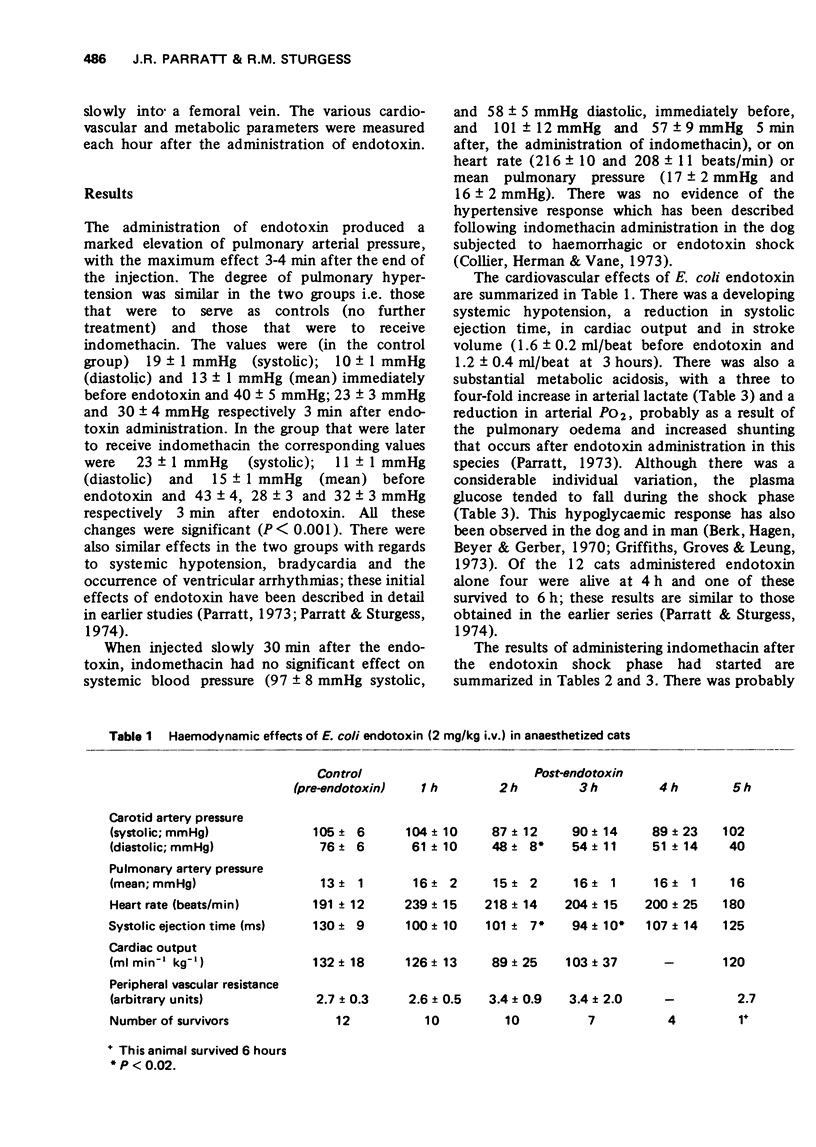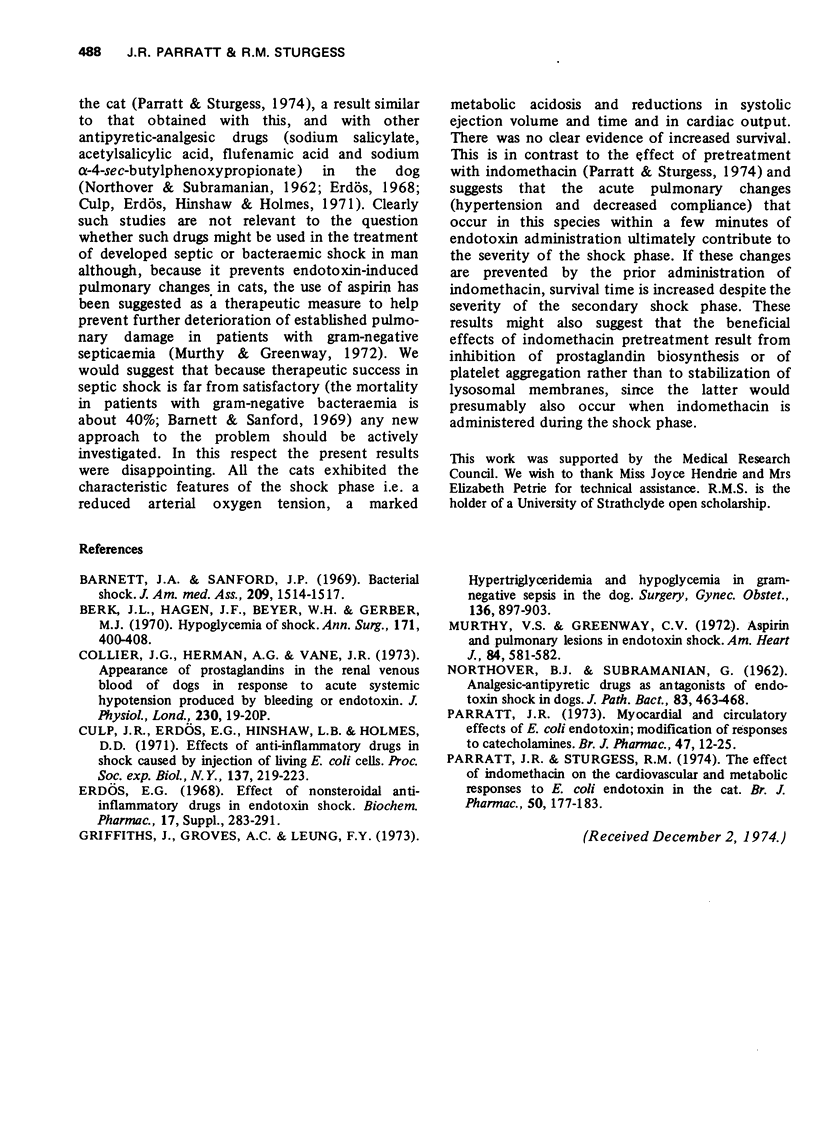Abstract
1. An earlier study had demonstrated that indomethacin, administered before E. coli endotoxin, abolished the initial pulmonary vasoconstriction and delayed the onset of the secondary shock phase that results from the intravenous injection of this agent in cats. The object of the present study was to determine whether indomethacin modified the shock phase when administered after endotoxin. 2. All the cats (whether or not they received indomethacin, 10 mg/kg) exhibited the characteristic features of the delayed shock phase that result from the administration of endotoxin (2 mg/kg). These included systemic hypotension, hypoglycaemia, reductions in arterial pH, cardiac output and systolic ejection time and an increase in arterial lactate. Five out of the ten animals given indomethacin survived 4 h compared with four out of twelve in the control (endotoxin along) group. 3. These results do not support the suggestion that antipyretic-analgesic drugs like indomethacin may be of benefit when given during bacteraemic or septic shock. They do support the suggestion that the acute pulmonary changes (hypertension and decreased compliance) that occur in this species within a few minutes of endotin administration ultimately contribute to the severity of the shock phase.
Full text
PDF



Selected References
These references are in PubMed. This may not be the complete list of references from this article.
- Barnett J. A., Sanford J. P. Bacterial shock. JAMA. 1969 Sep 8;209(10):1514–1517. [PubMed] [Google Scholar]
- Berk J. L., Hagen J. F., Beyer W. H., Gerber M. J. Hypoglycemia of shock. Ann Surg. 1970 Mar;171(3):400–408. doi: 10.1097/00000658-197003000-00013. [DOI] [PMC free article] [PubMed] [Google Scholar]
- Culp J. R., Erdös E. G., Hinshaw I. B., Holmes D. D. Effects of anti-inflammatory drugs in shock caused by injection of living E. coli cells. Proc Soc Exp Biol Med. 1971 May;137(1):219–223. doi: 10.3181/00379727-137-35548. [DOI] [PubMed] [Google Scholar]
- Erdös E. G. Effect of nonsteroidal anti-inflammatory drugs in endotoxin shock. Biochem Pharmacol. 1968 Mar;(Suppl):283–291. doi: 10.1016/0006-2952(68)90314-6. [DOI] [PubMed] [Google Scholar]
- Griffiths J., Groves A. C., Leung F. Y. Hypertriglyceridemia and hypoglycemia in gram-negative sepsis in the dog. Surg Gynecol Obstet. 1973 Jun;136(6):897–903. [PubMed] [Google Scholar]
- Murphy V. S., Greenway C. V. Aspirin and pulmonary lesions in endotoxin shock. Am Heart J. 1972 Oct;84(4):581–582. doi: 10.1016/0002-8703(72)90494-2. [DOI] [PubMed] [Google Scholar]
- NORTHOVER B. J., SUBRAMANIAN G. Analgesic-antipyretic drugs as antagonists of endotoxin shock in dogs. J Pathol Bacteriol. 1962 Apr;83:463–468. [PubMed] [Google Scholar]
- Parratt J. R. Myocardial and circulatory effects of E. coli endotoxin; modification of responses to catecholamines. Br J Pharmacol. 1973 Jan;47(1):12–25. doi: 10.1111/j.1476-5381.1973.tb08154.x. [DOI] [PMC free article] [PubMed] [Google Scholar]
- Parratt J. R., Sturgess R. M. The effect of indomethacin on the cardiovascular and metabolic responses to E. coli endotoxin in the cat. Br J Pharmacol. 1974 Feb;50(2):177–183. doi: 10.1111/j.1476-5381.1974.tb08559.x. [DOI] [PMC free article] [PubMed] [Google Scholar]


